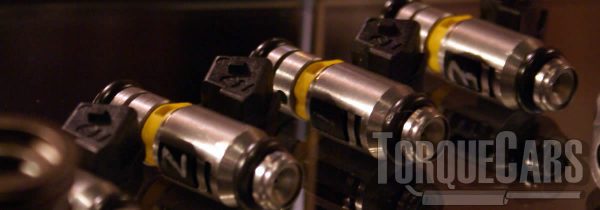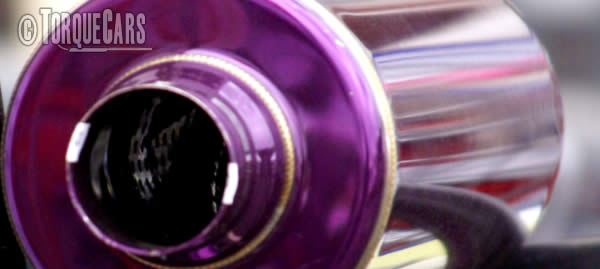Tuning the Chrysler 300C
"Thank you for reading our Chrysler 300C tuning article."
The 300C is a great project car to take up your weekends. With the right mods your 300C can be transformed into a stunning project. Don't waste money, do your homework and follow our unbiased guides to each performance upgrade to avoid wasting money.
The Chrysler 300C have loads of potential and with the best enhancements like ECU maps, turbo upgrades and camshafts you will certainly enhance your driving opportunities.
Let us provide a guide to 300C tuning and provide tips on the best modifications for your car.

Handling/Suspension upgrades
Many 300C owners uprate the handling of their cars with fast road suspension upgrades as a priority, this will certainly increase your enjoyment of the car.
We found that most 300C factory suspension setups need tweaking, a few degrees of toe out for cornering or toe in for stability, 0.8 to 1.3, and a bit of negative camber will radically improve your cornering and handling.
Drop the car by as much as 22mm - 38 mm. and fit motorsport grade stiffer dampers, bigger drops will need other modifications in most instances.
Don't just look at the peak power figures, you need to see the whole torque curve when determining if a mod is right for you 300C.
Sadly with smaller engine sizes you are wasting your time spending money on modifications, so if this applies to you get yourself an engine swap then apply the following mods.
Power mods.
Typically these performance upgrades are usually installed by our members, decide how far you want to push your car before you begin.
- 2.7 L EER V6
- 3.5 L EGG V6
- 5.7 L EZB HEMI V8
- 6.1 L ESF HEMI V8
- 3.0 L OM642 turbodiesel V6
From 2011 2nd Generation
- 3.0L Pentastar V6 (China)
- 3.6 L Pentastar V6
- 5.7 L HEMI V8
- 6.4 L HEMI V8
- 3.0 L VM A630 turbodiesel V6
Getting the right motorsport parts for your planned usage of the car is essential. Stage 3 (competition) mods just won't work well on the road making the car difficult to drive.
Please watch our introduction Video tutorial to car tuning. Be sure to subscribe and support our new channel.
How to tune your car
- Improve the handling
Focus on Suspension improvements, such as coilovers and make sure the bushings are in good order and that the alignment is correct. Then focus on improving the brakes, with a big disk brake conversion kit and fast road brake pads.
- Remove restrictions
Focus on the intake and exhaust with filters being the common point of restriction in a tuned car. Intercoolers may also become restrictive on turbo engines so this may also need to be uprated.
- Burn more fuel & air
Increase the fuelling so it matches the air coming into the engine. The ratio is important so you need to improve the fuel pump and injectors, so the head mods, big valve conversions, fast road camshafts and forced induction upgrades extra supply of air is adequately met.
- Test and replace any weak parts
Weak areas are commonly the clutch, the turbocharger and pistons and crankshaft in a highly tuned engine. Makes sure these components will cope with your power aspirations.
- The Tune or Remap
A cars ECU controls the fuel, timing, spark and even the turbo in some cases, so to fully extract your gains you should remap the car last and this will fully release the power. Some cars are easy to map, and others require piggyback ECU's or aftermarket ECU's but this is the most vital step of your tuning project.
Modifying to Stage 1:
Lighter flywheel, Panel air filter, Remap, Alloy wheels, Suspension upgrade (drop 22mm - 38 mm.), Sports exhaust.
Modifying to Stage 2:
Fast road cam, Ported and polished head, fuel pump upgrades, Power/Sport clutch, high flow fuel injector.
Modifying to Stage 3:
Adding or upgrading forced induction (turbo/supercharger), Sports gearbox, Competition cam, Engine balancing, Internal engine upgrades (pistons/head/valves).
Peak power is nice in motorsport but for a drivable and fun car you need a long power band and perhaps extending the rev range.
In this article we shall give an overview and introduction to the best performance parts for your car, but we'd encourage you to spend some time on the site looking into the details of each type of performance part.Fast road cams offer one of the biggest performance gains for your money as far as a stand alone performance parts goes on a NASP engine.
The exhaust & intake valve timings play a huge factor in your cars power band, but be careful here, getting this wrong can upset the idle and make the car difficult to drive in traffic. You'd need to follow a cam upgrade with other mods and finish with a performance chip to fully release the power gain.
Don't forget to uprate the fuelling when you are increasing the power - it makes the car more thirsty.
Using high octane petrol is another option if you find you are suffering from detonation or premature ignition on your Chrysler project after fitting other tuning kits.  Larger injectors will enable you to supply sufficient fuel to the engine.
Larger injectors will enable you to supply sufficient fuel to the engine.
A fuel pump will only deliver a finite amount of fuel, so you may need to uprate this if your injectors are demanding more fuel.
Intake and Exhaust Tuning.
The next area for modification is the intake and exhaust. Please note that WE DO NOT FEEL YOU GET POWER GAINS FROM INDUCTION KITS, unless you have tuned your car massively and are finding that the standard air intake has become a limitation.

Derestricting the air flow into the engine is a primary goal of tuning so get a better flowing air filter if you find that the car is running lean. Induction kits can sound sporty but due to the warm air in the engine bay they will not really increase power and usually rob you of power.
Sports exhausts generally help improve air flow through the engine but do not go too wide or you may end up will reduce the flow rate. Stick to 1.5 to 2.5 inches for best results.
Head work including a head port and polished and 3 or 5 angle valve job will really help to release the potential of the engine.
Your clutch can seriously let you down as you increase the power if it starts to complain and the standard clutches are only ever good for power gains of up to 43%. Fit an uprated clutch to avoid power losses through the transmission.
The best mods in our opinion for your 300C are Remapping or piggy back ecu, fast road cam and air intake and exhaust.

NASP engines do not achieve big power gains if you remap them, unless you have done extensive modifications. With turbocharged engines this is another story. A remapped turbo will give big power gains and fully release the potential power of the engine.
We've also come across some owners playing with twincharging conversions and making some very high power figures.
Despite the large cost involved adding forced induction to a NASP engine will give large power gains. It is generally easier to bolt on a supercharger than it is to install a turbo. Turbos increase power in exponential proportion to th engine speed and this can make mapping difficult.
The nice proportional boost and rpm characteristics of the supercharger make them simpler to map. To cope with forced induction you will usually need to decrease the engine compression ratio .
Alloy wheel upgrades.
The benefits of alloys include reducing your unsprung weight and more efficient brake cooling via the extra air flow they allow.
Get a good track legal slick tire to improve your handling and help improve traction on your 300C.
Please note that although they can look cool on the 300C big alloy wheels will actually decrease your performance. The larger you go the lower your acceleration will be - this to the change in your effective final drive ratio.
For this reason we would advise sticking to a maximum wheel size of 19 inches, although we know some of our members have with bigger wheels with no problems.
For more information on Tuning your car please join us in our friendly forum where you can discuss 300C options in more detail with our 300C owners. It would also be worth reading our unbiased Chrysler tuning articles to get a full grasp of the benefits and drawbacks of each modification.
Please help us improve these tips by sending us your feedback in the comments box below.
We love to hear what our visitors have got up to and which mods work best for them on each model of car. Comments are used to improve the accuracy of these articles which are continually updated.
If you liked this page please share it with your friends, drop a link to it in your favourite forum or use the bookmarking options to save it to your social media profile.
Check out TorqueCars new YouTube channel, and see their awesome new content...
Feedback
Please use our forums if you wish to ask a tuning question, and please note we do not sell parts or services, we are just an online magazine.
Help us improve, leave a suggestion or tip
